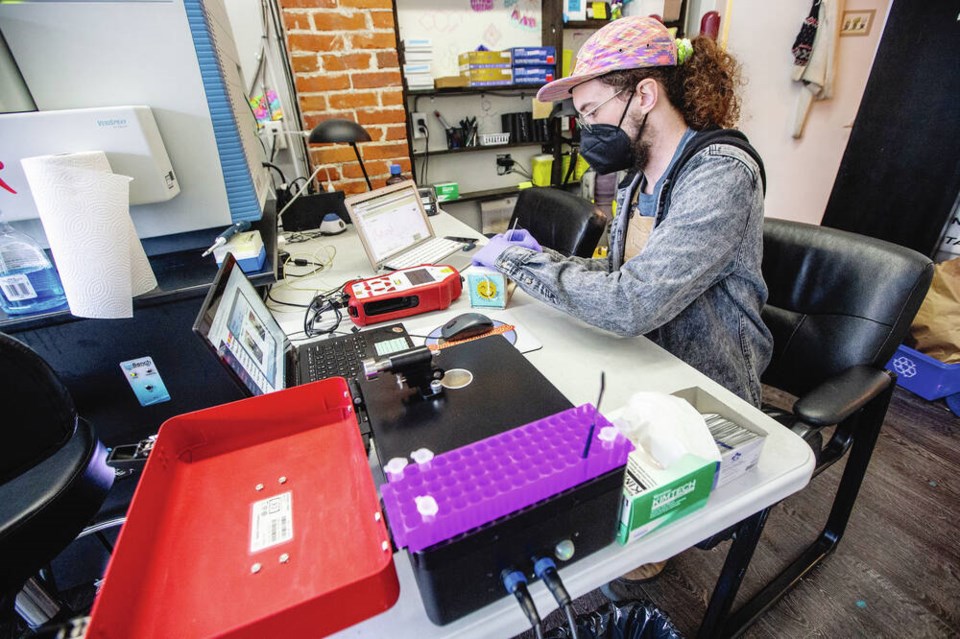An animal tranquilizer identified in the supply of street drugs in parts of the United States, and more recently showing up in Canada, is not being reported in significant numbers in the unregulated drug supply on Vancouver Island.
Only about three per cent of opioid samples tested on the Island over the last six months have contained xylazine, sometimes known as “tranq,” said Bruce Wallace, co-lead of Substance UVic, a project that tests drug samples brought to them in Victoria, Port Alberni, Campbell River and Courtenay-Comox.
Xylazine is a drug used for sedation, anesthesia, muscle relaxation and pain relief in animals such as horses and cattle, and is not approved for human use in Canada.
The project first detected the drug in street samples on the Island in October 2021, and continues to monitor for it, along with many other substances, in case of an increase in prevalence, Wallace said.
“We’re continuing to report on xylazine because it’s something that people are concerned about,” said Wallace, a University of Victoria professor in the school of social work and a scientist with the Canadian Institute for Substance Use Research.
Concerns about the increasing prevalence of xylazine have made headlines in the U.S., particularly in Philadelphia, where more than 90 per cent of lab-tested samples were positive for the substance in 2021, according to the Philadelphia Department of Public Health.
It’s believed xylazine is added to opioids to increase the length of time a high lasts. As a sedative, xylazine suppresses the central nervous system, causing low blood pressure, a slowed heart rate and a lower breathing rate. There have been reports of skin ulcers, abscesses and lesions associated with the substance.
Xylazine does not respond to naloxone, which reverses opioid overdoses, making it more challenging to treat overdoses that involve a mix of the two substances.
Since 2019, xylazine has been increasingly identified in samples submitted to the Drug Analysis Service by Canadian law enforcement agencies, with the bulk of samples reported in Ontario, according to a Health Canada report.
The substance was identified by the service in just five samples in 2018 but the number jumped to 1,350 last year, with just over 20 per cent of those samples coming from B.C.
Of more concern on the Island is the presence in opioid samples of benzodiazepines, which, like xylazine, do not respond to naloxone. Reports from the Island drug-checking project show about half of all fentanyl samples contain a type of benzodiazepine, Wallace said.
“What we really try to highlight in our reporting of the opioid supply is that there’s multiple active ingredients in there and that they are constantly changing,” he said. “I think that’s really the most important thing to be noting about unregulated opioids.”
Fred Cameron, operations co-ordinator and harm-reduction manager with SOLID Outreach Society — a non-profit that provides peer-based health education and support to reduce harms associated with drug use — said the potential threat of xylazine highlights the need for access to drug testing and the importance of the project’s reports, which provide an overview of the unregulated supply.
“We’re doing everything we can to try to help the community to catch that before it becomes a major issue,” he said.



